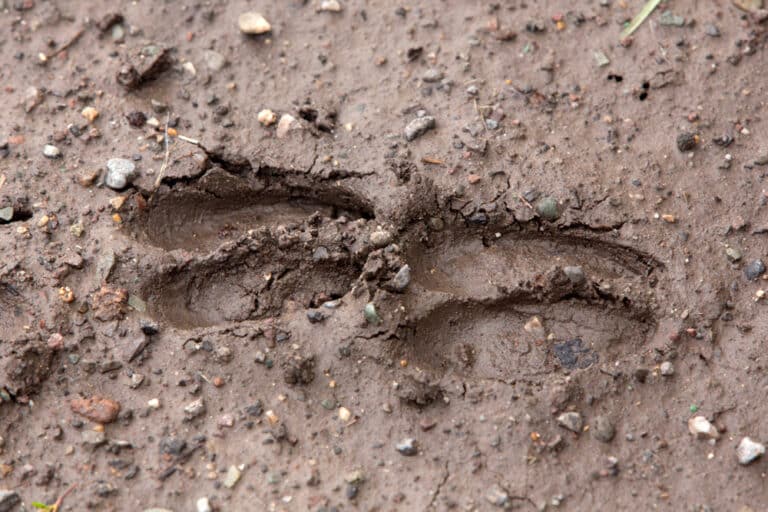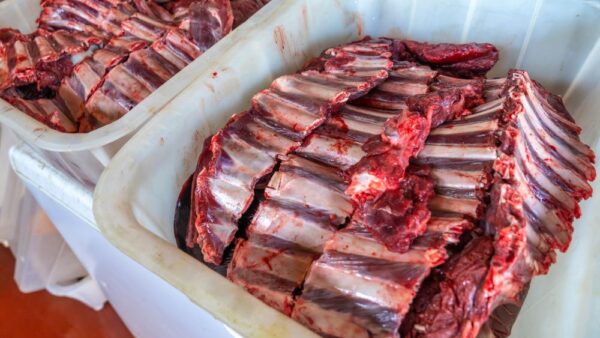Among North America’s most iconic mammals, white-tailed deer are widespread and well-known for their graceful presence. Many have asked, ‘How long are deer pregnant?’. When discussing the reproductive cycle, the gestation period for whitetail deer lasts approximately 200 days. For those not quick with math, that’s 28 to 30 weeks.
This duration is often used as a benchmark when discussing how long a deer is pregnant. However, it is crucial to remember that individual variations can occur within this average timeframe.
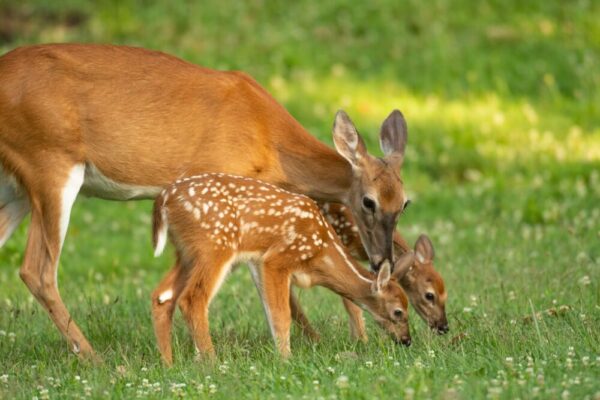
Whitetail Deer
Among North America’s most iconic mammals, white-tailed deer are widespread and well-known for their graceful presence. When discussing the reproductive cycle, the gestation period for whitetail deer lasts approximately 200 days. For those not quick with math, that’s 28 to 30 weeks.
This duration is often used as a benchmark when discussing how long a deer is pregnant. However, it is crucial to remember that individual variations can occur within this average timeframe.
Mule Deer
Mule deer are named for their large ears, which resemble those of mules, making them easily distinguishable from other deer species. Regarding pregnancy duration, mule deer exhibit similarities to white-tailed deer but differ in some aspects.
The gestation period for mule deer typically falls within the range of 190-210 days—a slightly shorter duration than their white-tailed cousins. This variance provides an intriguing insight into the diversity among cervid reproductive strategies.
Elk
Elk‘s awe-inspiring stature and captivating antlers adorn the males’ heads during mating season. This majestic species has a unique pregnancy length that differentiates it from other cervids. Elk pregnancies last approximately 240-262 days—significantly longer than those of white-tailed and mule deer.
It allows for better management, conservation efforts, and a deeper appreciation for these magnificent creatures’ life cycles. As we continue our exploration, we’ll uncover additional factors that influence the duration of deer pregnancies, shedding light on this captivating subject.
Factors Influencing Deer Pregnancy Length
When understanding how long a deer is pregnant, we must consider the impact of environmental conditions and food availability. Deer are heavily influenced by their surroundings when it comes to reproduction.
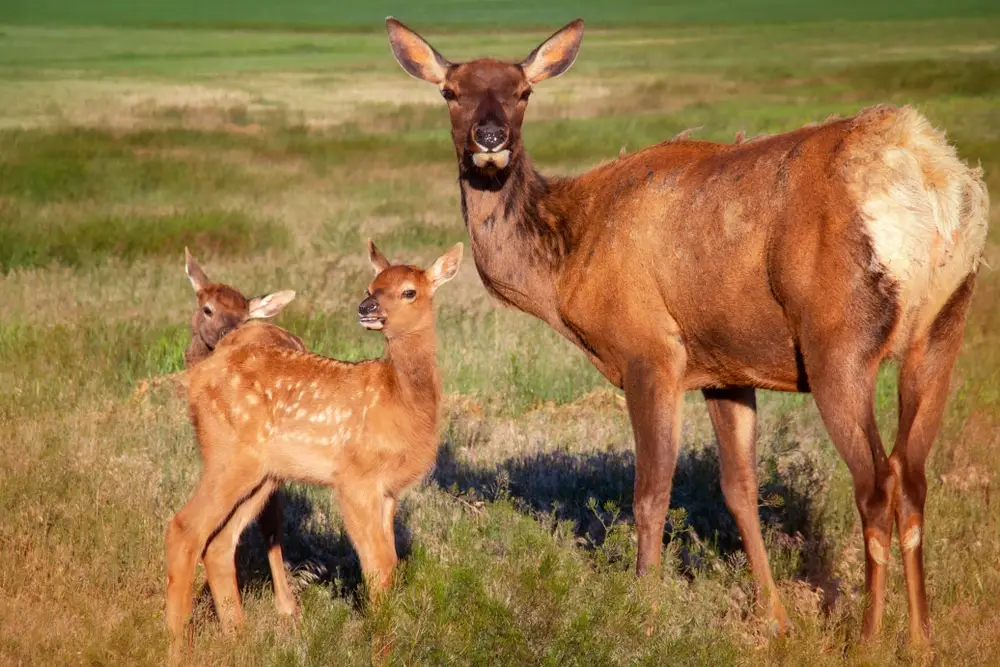
Fawns born in late May and June have the best chance of survival due to optimal conditions for their development, while those born too early risk exposure to harsh weather, and those born too late may not be adequately prepared for the challenges of winter.
Climate, vegetation, and habitat quality can all play a role. In regions with harsh winters or limited food sources, deer may experience delayed pregnancies as their bodies adapt to challenging circumstances.
Conversely, areas with abundant food supply and favorable conditions may contribute to shorter gestation periods. So remember, Mother Nature has her say in how long a deer stays pregnant.
Age and Health of the Doe
Age isn’t just a number for deer regarding pregnancy length. The age and health of the doe have a significant impact on gestation periods. Younger does often have shorter pregnancies than older ones. Additionally, healthier does are more likely to give birth to multiple fawns, including twins and triplets, under favorable conditions.
This is because younger females tend to reach sexual maturity earlier and have well-developed reproductive systems that function more efficiently. Additionally, overall health plays a crucial role in determining pregnancy duration.
Those who are malnourished or experiencing health issues may have prolonged pregnancies as their bodies prioritize survival over reproduction. It’s fascinating how a doe’s life stage and well-being can affect how long she carries her young.
Genetic Variations within Deer Populations
Just like humans, deer populations exhibit genetic variations that can influence pregnancy length. By the end of the 19th century, the entire population of whitetail deer in the United States was alarmingly low at around 300,000, leading to significant restoration efforts that included introducing deer from various regions to bolster genetic diversity.
Due to genetic factors, different subspecies or geographical populations of deer may have distinct reproductive characteristics.
These variations can manifest in differences in gestation periods among different groups of deer within the same species or genus. Genetic diversity contributes to the resilience of wildlife populations but also results in subtle nuances like variations in reproductive timings across different regions or even individual animals within populations.
By considering these factors—environmental conditions and food availability, the age and health of the doe, and genetic variations within deer populations—we gain a deeper appreciation for the complexity of how long a deer is pregnant. Understanding these influences helps us develop effective wildlife management strategies and ensure the conservation of these magnificent creatures.
How long are deep pregnant – Gestation Period
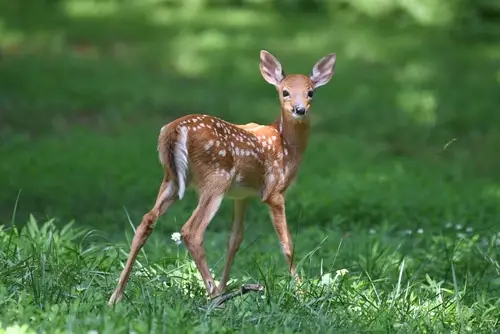
Average whitetail deer gestation period – approx 200 days
There is a lot of misinformation about the duration of a white-tailed deer’s pregnancy. Some folks claim it lasts anywhere from a few weeks to a year! But fear not, dear reader, for I am here to set the record straight.
On average, the gestation period for a white-tailed deer is approximately 200 days. Yes, you heard that right!
Not too long, not too short – just about seven months. Of course, there can be some natural variation in this timeframe, but generally speaking, you can expect our graceful four-legged friends to carry their precious cargo for around 200 days.
Stages of white-tailed deer pregnancy
Now that we’ve established the average length of pregnancy let’s delve into the fascinating stages of white-tailed deer pregnancy. The journey begins with early embryonic development and implantation.
After successful fertilization occurs within the doe’s reproductive system (in a process best left discreetly explained elsewhere), it takes roughly four months for the tiny embryo to develop fully. During this period, young fawns begin to emerge, typically in the months of May and June, showcasing their unique spotted coats.
During this time, the embryo undergoes various transformations while nestled securely within its mother’s womb. As we progress through time and fetal growth continues unabated, we enter the next stage: fetal and organ development.
Around halfway through their pregnancy journey—approximately three-and-a-half months in—even though their mothers’ bellies are still modestly sized or barely showing any signs of bulging, fawns have grown considerably from their minuscule embryonic state and begin rapidly developing their organs and bodily structures. Fascinatingly intricate processes occur, significantly influencing these adorable creatures’ future growth and health outcomes.
As their organs shape, their little hearts beat, and their skeletal systems solidify. While still concealed within the protective confines of their mother’s womb, these growing fawns are quietly preparing themselves for life outside—strengthening bones, developing muscles, and honing the necessary tools for survival in the wild.
Thus, white-tailed deer gradually progress toward the momentous birth event through these early embryonic development and implantation stages, followed by fetal growth and organ development. It is truly a remarkable journey that showcases nature’s awe-inspiring intricacies.
Mule Deer Pregnancy: Similarities and Differences
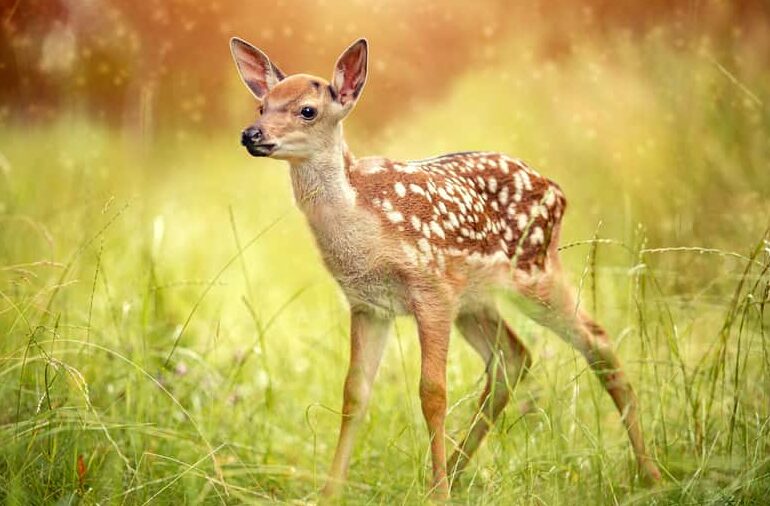
Like their white-tailed relatives, mule deer have unique characteristics regarding pregnancy. Female deer exhibit protective behaviors during pregnancy, prioritizing the safety of their young by fleeing from potential threats and showing alarm behaviors. Their gestation period typically ranges from approximately 190 to 210 days.
This duration is slightly shorter than the white-tailed deer’s but still falls within a similar timeframe. However, it’s important to note that individual variations can occur within the mule deer population.
Unique Reproductive Strategies in Mule Deer Population
Mule deer employ fascinating reproductive strategies that set them apart. One interesting characteristic is their ability to delay implantation after fertilization. This means that even after mating, the fertilized eggs do not immediately implant in the uterus for development.
Instead, they wait until conditions are more favorable for growth and survival. This strategy allows mule deer to adjust the timing of birth according to food availability and environmental factors.
Elk Pregnancy: An Intriguing Variation
Elk pregnancy presents an intriguing variation compared to other cervids. The gestation period within elk populations lasts approximately 240-262 days, making it longer than white-tailed and mule deer pregnancies. Additionally, elk exhibit seasonal breeding patterns known as rutting behavior. The peak breeding period for elk typically occurs in the fall, aligning with photoperiod changes to optimize calf survival.
Rarely Known Facts About Baby Deer
Understanding the whitetail deer gestation period involves delving into intriguing lesser-known facts that add depth to their reproductive strategies. Fawns drop primarily by mid-June, although some does may give birth later in the summer depending on various environmental conditions. Superfetation is one phenomenon observed in some deer species, including white-tailed deer. It refers to the ability to conceive while pregnant, resulting in staggered births within a single breeding season.


